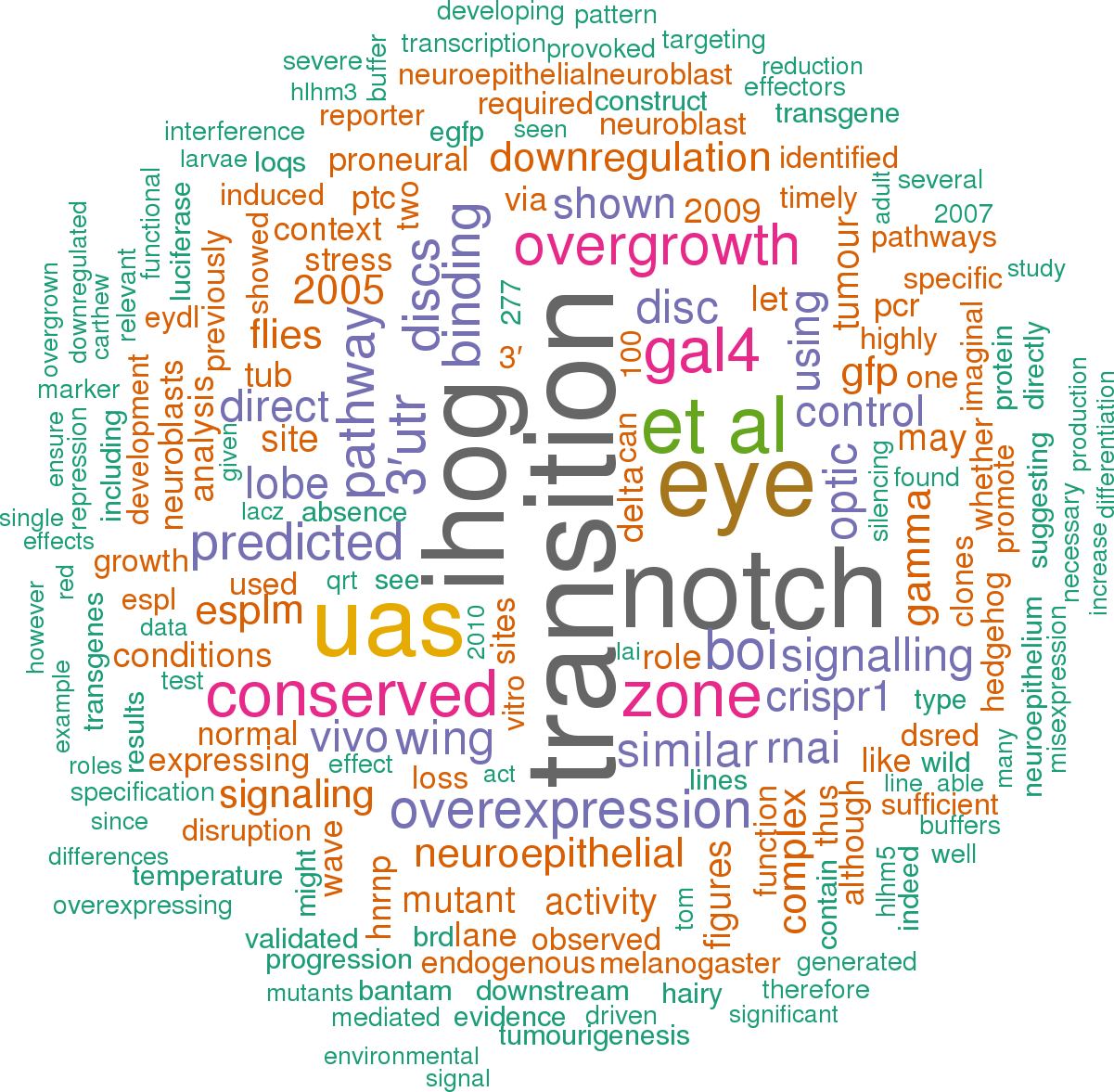Accession
MI0000127
Description
Drosophila melanogaster
dme-mir-7 precursor miRNA
Literature search

31 open access papers mention dme-mir-7
(265 sentences)
(265 sentences)
Sequence
501109
reads,
4215
reads per million, 49 experiments
gagugcauuccguaUGGAAGACUAGUGAUUUUGUUGUuuggucuuugguaauaaCAAUAAAUCCCUUGUCUUCUUAcggcgugcauuu
((((((((.(((((.(((((((.((.(((((.((((((....(....)....))))))))))).)).)))))))))))).))))))))
((((((((.(((((.(((((((.((.(((((.((((((....(....)....))))))))))).)).)))))))))))).))))))))
Structure
u U U U U uggu u
gagugcau ccgua GGAAGAC AG GAUUU GUUGUu c u
|||||||| ||||| ||||||| || ||||| |||||| |
uuuacgug ggcAU UCUUCUG UC CUAAA UAACaa g u
c - U C - uaau g
Annotation confidence
High
Do you think this miRNA is real?
Comments
Stark et al. [2] have identified targets for miR-7 in Drosophila using computational prediction followed by experimental validation. miR-7 regulates a family of Notch targets including the Enhancer of split and Bearded complex genes Tom and m4, and the basic helix-loop-helix transcriptional repressors HLHm3 and hairy.
Genome context
chr2R: 20606067-20606154 [+]
Mature dme-miR-7-5p
| Accession | MIMAT0000112 |
| Description | Drosophila melanogaster dme-miR-7-5p mature miRNA |
| Sequence | 15 - UGGAAGACUAGUGAUUUUGUUGU - 37 |
| Evidence |
experimental
cloned [1,4], Northern [1,3-4], 454 [5-6], Illumina [6] |
| Database links |

|
| Predicted targets |

|
Mature dme-miR-7-3p
| Accession | MIMAT0020790 |
| Description | Drosophila melanogaster dme-miR-7-3p mature miRNA |
| Sequence | 55 - CAAUAAAUCCCUUGUCUUCUUA - 76 |
| Evidence | not_experimental |
| Database links |

|
References
|



